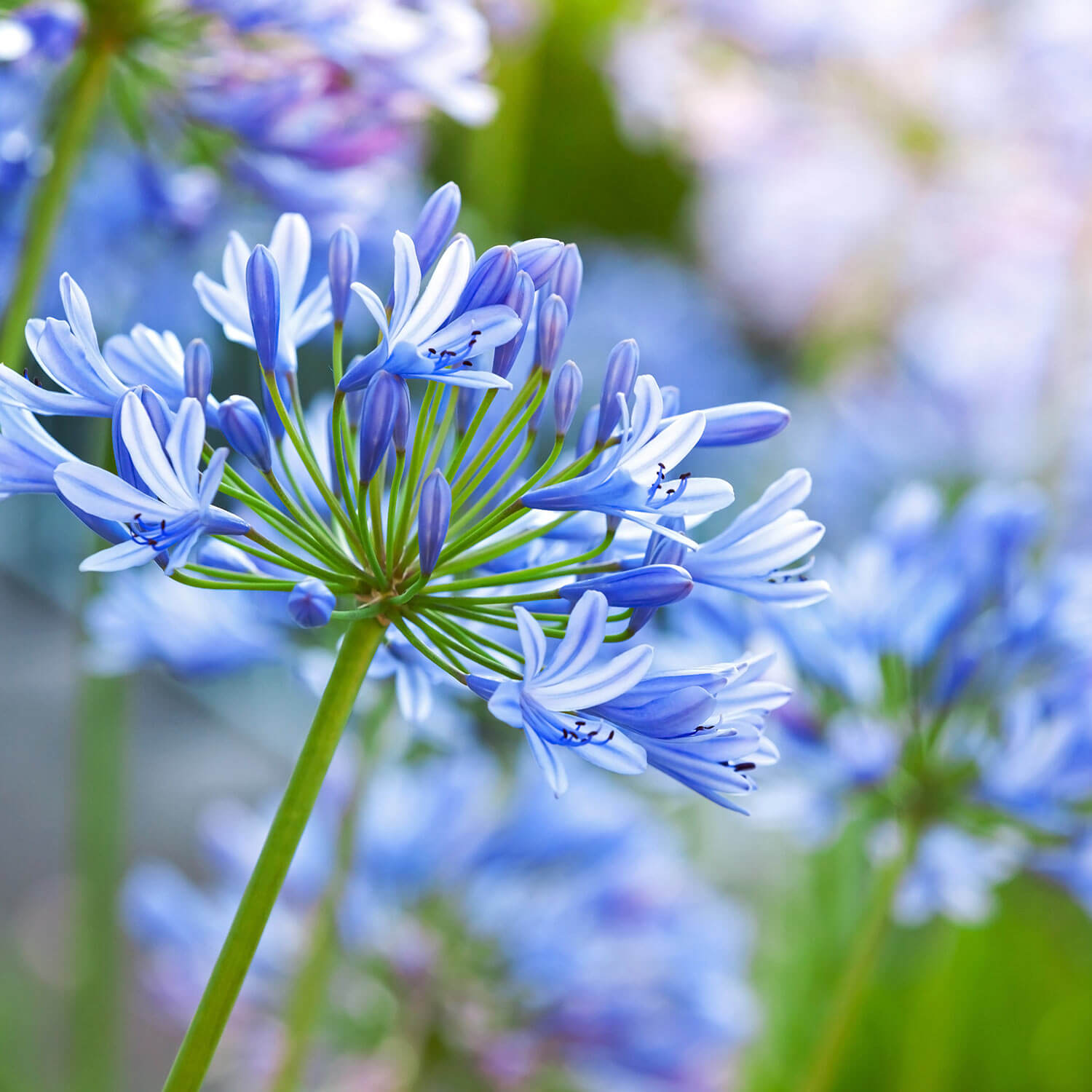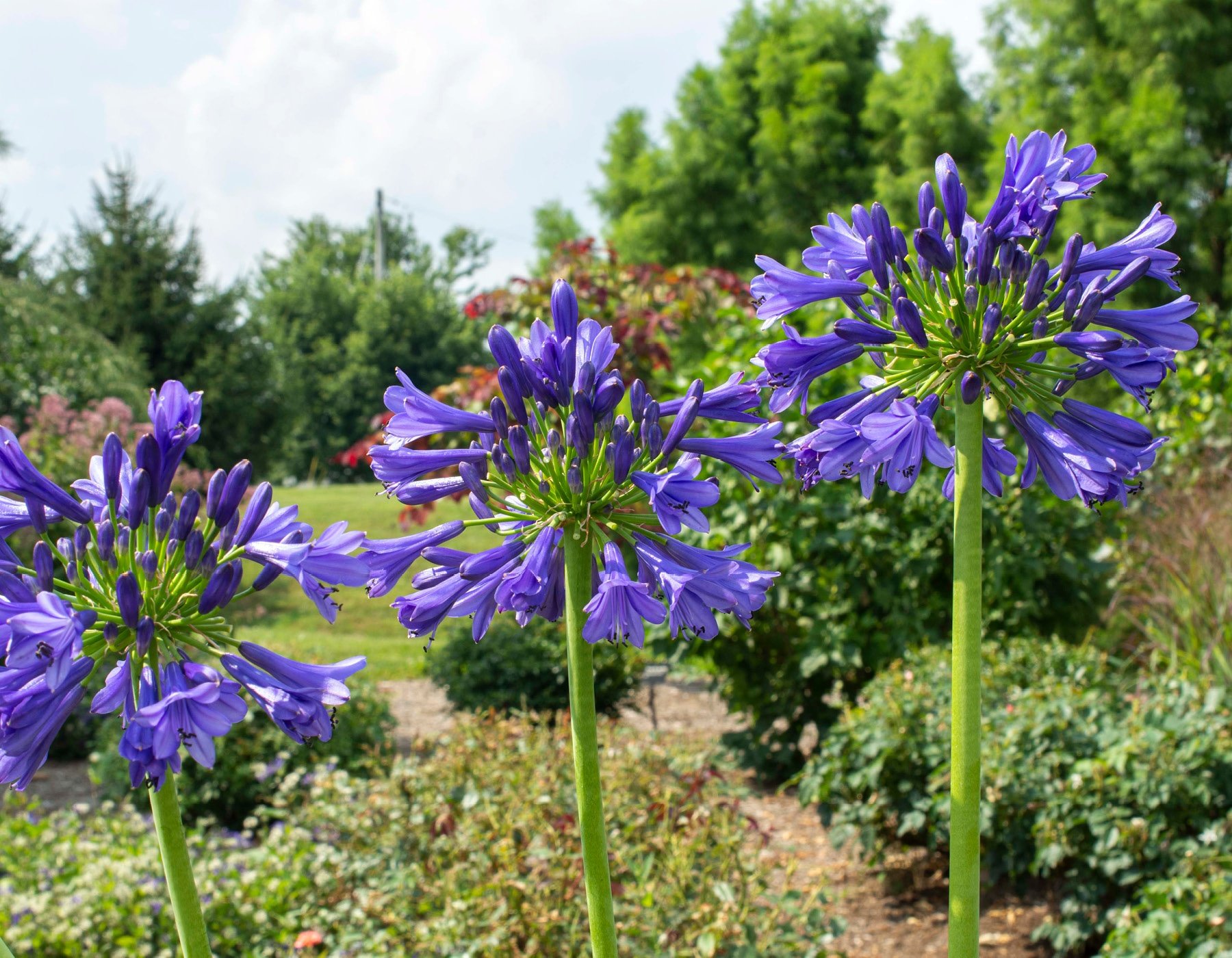Usual Agapanthus Issues and How to Fix Them
Usual Agapanthus Issues and How to Fix Them
Blog Article
Mastering the Art of Agapanthus Care: Important Actions for Healthy And Balanced Development and Vibrant Blooms
In the world of cultivation, the growing of agapanthus stands as a rewarding venture for those that look for to nurture these elegant blooming plants. With their striking blossoms and elegant vegetation, agapanthus has captured the attention of gardeners worldwide. However, accomplishing optimal development and dynamic blossoms calls for a nuanced method that includes different vital steps. From selecting the appropriate range to mastering trimming methods, the journey towards growing flourishing agapanthus plants is multifaceted and holds the essential to unlocking the complete capacity of these botanical gems.

Selecting the Right Agapanthus Range

When choosing the ideal Agapanthus variety for your garden, consider variables such as environment suitability, bloom color, and growth routine. Agapanthus, commonly referred to as Lily of the Nile or African lily, is available in a selection of shades varying from tones of purple and blue to white. Pick a blossom shade that matches your existing garden scheme to develop an unified landscape. Furthermore, think about the climate in your region to ensure the Agapanthus variety you select can grow in your certain conditions. Some varieties are extra tolerant of cold temperatures, while others like warmer environments. Understanding the development behavior of various Agapanthus selections is important for correct placement within your yard. Some ranges have a clumping development habit, ideal for boundaries or containers, while others have a more spreading nature, suitable for ground cover or mass growings. By very carefully assessing these factors, you can pick the best Agapanthus variety to improve the beauty of your yard.
Perfect Growing Problems
Taking into consideration the optimum environmental demands is vital for effective Agapanthus growing. Agapanthus prospers in well-draining soil with a somewhat acidic to neutral pH degree. When growing, select an area that receives complete sunlight to partial shade. In hotter environments, giving some mid-day shade can stop scorching of the fallen leaves. Agapanthus plants are delicate to chilly temperature levels and need to be shielded from frost during winter season.
To make certain healthy development and vivid flowers, plant Agapanthus light bulbs at a deepness of concerning 2-4 inches and room them 8-12 inches apart. Including natural issue, such as garden compost, to the dirt can boost drain and fertility, promoting robust root growth. Mulching around the base of the plants helps keep dampness and reduces weed development. Normal watering is crucial, particularly throughout the growing season, to maintain the soil continually moist however not waterlogged.
Watering and Fertilizing Tips
Preserving proper moisture degrees and offering necessary nutrients are key components in the treatment program for Agapanthus plants. When it comes to watering Agapanthus, it is crucial to strike an equilibrium. These plants favor continually wet dirt yet are susceptible to root rot if overwatered.
Feeding Agapanthus is vital for advertising healthy development and prolific blooms. Use a well balanced plant food, such as a 10-10-10 formula, in the early spring as brand-new development arises. By Read Full Report complying with these watering and feeding ideas, you can guarantee your Agapanthus plants grow and generate lively, resilient flowers.
Pruning Strategies for Agapanthus
Trimming Agapanthus plants at the appropriate times and with appropriate strategies is vital for maintaining their wellness and promoting ideal development and blooming. The ideal time to prune Agapanthus is in late winter or early spring before new development emerges.
Deadheading invested blossoms can also reroute the plant's energy into creating more blossoms instead than setting seeds. If you desire to collect seeds for breeding, leave some blossoms to completely dry and mature on the plant.
Remember to use tidy, sharp devices to make specific cuts and decrease the threat of introducing illness. Agapanthus. Routine trimming will assist keep your Agapanthus looking healthy and neat while making certain an abundant display screen of stunning flowers
Managing Usual Insects and Conditions
After making certain correct pruning strategies for Agapanthus, it is vital to attend to usual pests and conditions that can influence the wellness and vitality of these plants. Agapanthus plants are typically sturdy but can still succumb certain concerns. One more common insect that influences Agapanthus is the Agapanthus gall midge. This tiny, orange fly lays its eggs in the vegetation, leading to altered growth and flower buds that stop working to open up. To combat this parasite, trim and ruin any kind of affected plant parts and think try here about utilizing insecticidal soap.
Furthermore, Agapanthus plants can suffer from root rot if they are grown in inadequately draining dirt. By being cautious and taking prompt activity versus diseases and parasites, you can assist your Agapanthus plants grow and produce lively blossoms. Agapanthus.

Conclusion
To conclude, mastering the art of agapanthus care involves selecting the appropriate range, supplying perfect growing conditions, correct watering and fertilizing, appropriate trimming techniques, and dealing with common parasites and diseases. By following these necessary actions, you can guarantee healthy development and vivid flowers for your agapanthus plants. Remember to frequently keep track of and keep your plants to advertise their total health and long life.
To guarantee healthy growth and vibrant blossoms, plant Agapanthus light bulbs at a depth of concerning 2-4 inches and room them 8-12 inches apart. By complying with these watering and feeding ideas, you can ensure your Agapanthus plants thrive and produce vibrant, lasting blooms.
One usual pest that influences Agapanthus is the Agapanthus gall midge. Additionally, Agapanthus plants can experience from root rot if they are grown in badly draining soil. By complying with these essential steps, you can guarantee healthy growth and vibrant blooms for your agapanthus plants.
Report this page